|
 Dr. Ajey Lele Dr. Ajey Lele
A former Indian Air Force officer, Gp. Capt. (Dr.) Ajey Lele is Senior Fellow at the Manohar Parrikar Institute for Defence Studies and Analyses, New Delhi, India. His areas of research include issues related to Weapons of Mass Destruction (WMD) and Strategic Technologies. He has few publications to his name. He started his professional career as an Indian Air Force Officer but took early retirement to pursue his academic interests. He holds a rank of Group Captain.
Topic: Disruptive Technologies and Strategic Challenges
Abstract: Today, data is recognized as a strategic commodity and often referred to as the new oil. The need to leverage the potential of rapidly expanding data led to the evolution of unique techniques and technologies for data storage, analysis, and visualization. If analyzed effectively, this data can assist in finding information that is efficient enough in initiating a change in the patterns of how different models function. Technologies like Additive Manufacturing, Big Data Analytics, Cloud Computing, Smart Factories and IoT (Internet of Things) are defining the fourth Industrial Revolution (Industry 4.0). Such technologies have wider applicability in the defence sector too. They actually have the potential to bring in disruptive changes to the industry in general and the military industrial complex (MIS) in particular. Today, data is becoming cheaper, more accessible and available to bring about cost-effective structural changes in various processes across sectors.
This paper aims to understand the technology trajectory along with the future of the data and disruptive technology-driven world. The paper also analyses the potential of new technologies like Big Data, IoT, 3D Printing and others, that involve latching together isolated data flows coming from potentially every nook and corner of the world. This development could have critical implications, specifically between those whose data are included and those whose are excluded, and between those who have access to the data and those who do not. Alongside these developments, the maturing of weapons technologies like hypersonic weapons will change the dynamics of the modern-day battlefield. The future challenges and impact of these technologies are reflected upon in the areas of climate change, poverty, population, geopolitics, military, warfare and global governance. The paper ends with a discussion on the need for regulative bodies to get engaged in the optimum and effective utilization of these dual-use technologies and control the misuse of the same. |
|
|
 Dr. Alex Vines Dr. Alex Vines
Dr. Alex Vines OBE has been Director of the Africa Programme at Chatham House since 2002 and became Managing Director for Risk, Ethics and Resilience in 2020. Previously, at Chatham House, he held roles as Director for Regional Studies and International Security, and Director for Area Studies and International Law. He is also an Assistant Professor at Coventry University, and sits on the Editorial and Advisory Boards of the South African Journal of International Affairs, Africa Review (journal of the African Studies Association of India), and the Journal of Southern African Studies. He chaired the UN Panel of Experts on Côte d’Ivoire from 2005 to 2007 and was a member of the UN Panel of Experts on Liberia from 2001 to 2003. He was also a member of the Commonwealth Observer Group to Mozambique in 2019 (and Ghana in 2016) and worked for ONUMOZ in Mozambique and UNAVEM II in Angola. Dr. Vines was awarded an OBE in 2008 and holds a PhD from Coventry University.
Topic: Conflict and Human Security in Africa
Abstract: In 2013, African leaders vowed "not to bequeath the burden of conflicts to the next generation of Africans" and set a goal of ending all African wars by 2020. This unrealistic goal has failed and this paper will examine how conflicts are changing in Africa and what are the international, national and local responses. It will illustrate how traditional UN peacekeeping models do not work when enforcement, counter-terrorism or trans-national operations are needed. In 2002, the African Union (AU) launched a new institutional framework, the African Peace and Security Architecture (APSA), but these have had to be adapted in recent years to include ad hoc regional coalitions to address these new security challenges with limited success. This paper will examine why the AU’s ambition to ‘Silence the Guns’ by 2020 was unrealistic, and outline how peace making and peacebuilding in Africa could become more successful.
|
|

Mr. Amit Cowshish
Mr. Amit Cowshish is a Consultant with the Manohar Parrikar Institute for Defence Studies and Analyses and a former officer of the Indian Defence Accounts Service. He served in various capacities in the Defence Accounts Department, Central Vigilance Commission and the Ministry of Defence during a career spanning thirty-five years. He has experience in handling defence planning, budget, procurement, and other financial matters. He was involved in several reviews of the procurement procedures and delegation of financial powers to the service officers. He was the member-secretary of the Defence Expenditure Review Committee set up in 2008 and a member of the committee constituted in 2016 for raising a Defence Acquisition Organisation. He is associated with the exercise presently underway in the Ministry to review the revenue and capital procurement procedures. He is a Partner with Dua Associates, Advocates and Solicitors at New Delhi.
Topic: Financial Management of Defence in India
Abstract: Financial management is all about securing adequate federal funding, judicious intra-organizational allocation and efficient utilization of finances for achieving the organizational goals. On all these counts, financial management of defence poses a big challenge. Mismatch between the projected requirement of funds and budget outlays is endemic. Obligatory expenses dictate intra-organizational allocations, and utilization of whatever funds are left for modernization and other operational needs after accounting for such exigencies, is impacted by procedural complexities and tardy decision-making. The problem has persisted largely because of the reluctance to come to terms with the reality that defence funding cannot improve unless there is an exponential spike in the government's overall budget receipts, excluding borrowings. Much is expected from the Chief of Defence Staff and the Fifteenth Finance Commission which is likely to recommend some innovative measures –hopefully acceptable to the States –to augment the defence outlay. This may help to some extent in speeding up modernization, but may not provide a holistic solution if the problem of burgeoning manpower costs –accounting for more than half of the total defence outlay for 2020-21–is left unaddressed. Financial realism is the sine qua non for efficient financial management of defence. |
|

Dr. Andrew Scobell
Dr. Andrew Scobell holds the Bren Chair in Non-Western Strategic Thought at the Krulak Center, Marine Corps University. He is currently on a leave of absence from the RAND Corporation where he has been a Senior Political Scientist since 2010. Dr. Scobell is concurrently Adjunct Professor in the Edmund A. Walsh School of Foreign Service at Georgetown University. His publications include: Chairman Xi Remakes the PLA (National Defense University Press, 2019), At the Dawn of Belt and Road (RAND, 2018), PLA Influence on China's National Security Policymaking (Stanford University Press, 2015), China's Search for Security (Columbia University Press, 2012), and China's Use of Military Force (Cambridge University Press, 2003). Dr. Scobell earned a doctorate in political science from Columbia University.
Topic: Front and Center? China's Place in the U.S. National Security Calculus and Defense Planning
Abstract: Where does China fit in the national security calculus and defense planning of the United States in 2020? The administration of Donald J. Trump has identified multiple threats to U.S. national security and set priorities for defense planning. This paper examines China's place in U.S. national security and national defense |
|

Lt. Gen. Anil Ahuja (Retd.)
Lt. Gen. Anil Ahuja is a former Deputy Chief of Integrated Defence Staff (Policy Planning and Force Development) and Additional Director General Military Operations. He commanded the Tezpur based 4 Corps and has been the GOC of the Mountain Division in Bomdilla – Tawang (Kameng Sector) along the Northern borders. He has been the co-chair of India-US DTTI Inter-Agency Task Force (DIATF) for India – US defence cooperation and Member-Secretary of the Defence Acquisition Council (DAC) during 2014-2016. He has been the Defence Attaché to Vietnam, Cambodia, Laos and a UN Military Observer in Angola. He is a graduate of the National Defence College and hold an M.Phil in Defence and Strategic Studies. A recipient of PVSM, UYSM, AVSM, SM, VSM & Bar for distinguished service, he is presently a Distinguished Fellow at the Vivekananda International Foundation and an Adjunct Fellow at the Delhi Policy Group.
Topic: Defence Planning and Force Development with Financial Prudence (or Within Financial Constraints)*
Abstract:
- Planning for defence and security of a nation against all possible threats and challenges is the overriding responsibility of every government, despite competing socio-economic and developmental priorities. In India, the government spends nearly 15% funds at its disposal on defence. Also, for years now, India has remained one of the largest importers of global arms. Despite this the armed forces remain inadequately equipped to meet the visualized security challenges and lament the deficiency /“hollowness” in arms, munitions and niche technology. This phenomenon is not peculiar to India and is experienced by most other countries. The process of defence planning and capability development with financial prudence thus remains a perpetual challenge for most governments.
- Some of the aspects that need to be considered to address this challenge are:
- Visualization of security threats and mode of manifestation across different domains, which would be peculiar to each country.
- Allocation of resources to meet these challenges – distribution of responsibilities between Armed forces, Paramilitary forces, Police and other agencies.
- Evolution of Security and Defence strategy and visualization of the pattern of operations to combat likely challenges.
- Force structuring and capability development requirements for multi-domain hybrid warfare. Inter se weightage to be accorded would be country / region-specific.
- Roll on defence budget planning for 10-20 years.
- Addressing dilemmas of : size of armed forces to be maintained; terms of engagement of soldiers (pay, allowances, perks & privileges, pensions) with implications on revenue expenditure; imports versus indigenization; alignments/strategic partnerships/alignments versus strategic independence; competing demands for conventional, strategic and asymmetric threats and for land, sea, aerospace and cyber domains.
- Building `capacities to budget’ or `budgeting to build capacities’?
- Like there are no set piece threats faced by nations, similarly, there are no template solutions either. The methodology of financial allocation varies from mere “apportioning” of yearly budgets to detailed Parliament-driven planning, as done in the yearly US “NDAA (National Defense Authorization Act)”. The aim of this paper is to highlight the factors to be considered and to suggest some pointers for defence planning within competing financial demands.
|
|
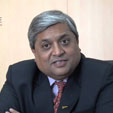
Vice-Admiral Anil Chopra, PVSM, AVSM (Retd.)
Vice-Admiral Anil Chopra is a Distinguished Fellow at Gateway House, Mumbai. Admiral Chopra has been writing and speaking extensively both in India and abroad on diverse geopolitical and maritime issues. He retired in 2015 from Indian Navy after four decades of distinguished service. He had the unique distinction of having been the Commander-in-Chief of both combatant commands of the Navy as well as having been the Director General of the Indian Coast Guard. As Assistant Chief of Naval Staff (Policy and Plans), and earlier as Principal Director Naval Plans, he was associated with the formulation of the Navy's Long-Term Force Structure and Force-Mix, and its Perspective and Financial Planning. He was a member of the Defence Acquisition Council for three years. Admiral Chopra was a Member of the National Security Advisory Board from 2017-2019. He was also a member of the Shekatkar Committee in 2016 to examine measures to enhance the combat capability of the Indian Armed Forces, and rebalance the defence budget.
Topic: Force Level Planning for the Indian Navy |
|

Mr. Apurv Kumar Mishra
Mr. Apurv Kumar Mishra is a Senior Research Fellow at India Foundation (IF), where he leads initiatives related to foreign policy. He is a faculty of law at Ashoka University and teaches courses on law at several institutions including Gandhinagar National Law University, Plaksha Tech Leaders’ Programme and Vedica Scholars’ Programme. He is also the Editor-in-Chief of India Law Journal and leads the Anubhav Lecture Series (ALS) at University of Chicago, India Centre. He is a founding member of the Robin Hood Army – a voluntary organization of young professionals and students that works to get surplus food from restaurants across to less fortunate people in 100+ cities across 12 countries. He has previously worked with the Albright Stonebridge Group – a Washington-based strategic advisory firm and the corporate law firm, Amarchand & Mangaldas.
Topic: Security and Statecraft in the Age of GAFA (Google, Amazon, Facebook and Apple)
Abstract: When Mark Zuckerberg launched his own book club in 2015, the first book he recommended was The End of Power by Moises Naim. A curious choice for the owner of Facebook because the book’s central claim is that in the 21st century power is “easier to get, harder to use, and easier to lose.” Traditional sources of power — government, big companies, religious institutions and conventional media — are facing a severe challenge from smaller, agile competitors, creating instability in international order and domestically within countries.
A key factor prompting this fundamental transition in the power structure of societies around the world is the pervasive use of technology in our daily lives. Take the case of India. Even though more than half of our population still does not have access to the internet, we are already the world’s second largest internet user base (behind China), with average monthly data usage matching the levels of developed countries.
The data we consume on the internet is increasingly driving our choices in public and private life — from whom we vote for, products we buy, news we read, to the person we marry. Governments now realize that this data generated by citizens is a vital national asset and needs protection against possible misuse by our adversaries. Therefore, a key policy challenge for our government is to protect the sanctity of the process by which Indians connected to the internet make their most important decisions.
However, technologists are often unable (or unwilling) to anticipate the broader impact of their technological creations on national security. On the other hand, software, hardware, platforms, and networks are regulated by sometimes conflicting and overlapping sets of laws and policies. This is complicated by the fact that our lawmakers favour status-quo and are quite slow in adapting to fast-changing technological interventions.
What are the guiding principles to create a regulatory framework for disruptive technologies that balance both risk and benefit? How have our courts and legislators responded to this challenge? The paper seeks to understand how Industry 4.0 is challenging the conventional national security paradigm that has guided India’s strategic establishment for the last three decades. It ends with a preliminary outline of a modified approach to manage India’s national security in an age of accelerating rate of social and technological change. |
|

Prof. Darko Trifunovic
Prof. Darko Trifunovic is a founding member and Director of the Institute for National and International Security. Dr. Trifunovic is an elected guest professor at the Center of American Studies, Fudan University, –Shanghai, China. He is also a Senior Research Fellow with the rank of Associate Professor at Fudan University's Institute of BRI Strategy and International Security. Additionally, Dr. Trifunovic is Adjunct Professor and Coordinator for Research at the Shanghai Academy of Social Science. Dr. Darko Trifunovic is also Senior Research Fellow and Lecturer with the Faculty of Security Studies at the University of Belgrade and Senior Adviser at the Research Institute for European and American Studies, Athens, Greece. He is a specialist in Security Studies, Intelligence & Counter Intelligence Studies as well as Counter-Terrorism and National and International Security Studies. He also served as the First Secretary of Bosnia and Herzegovina at the United Nations.
Topic: Hybrid War, Technology and Intelligence Sharing in National Security
Abstract: Every war is conflict but every conflict is not a war. Hybrid operations involve a whole range of activities aimed at achieving a state of information supremacy and attempting to shape the thought of an attacked target in accordance with the attacker's will and desires. Hybrid or influence operation seeks to influence the opinions and attitudes of the target audience (society, state, group), using the many benefits of digital media and social networks to spread the data and information they want, to spread their influence and impose on their own attitudes on others. In these processes, methods are often used to extract information from the actual context of the event and its placement in a fictional, targeted, counterfeit temporal-spatial context, to make it easier for the attacked public to better accept the placement misinformation without doubting its veracity. Hybrid operations, which until recently have been known as special operations in armed activities, have evolved into a dominant form of hybrid threats. Hybrid threats, as a set of different manifestations of particular hybrid operations, entail directed and organized action towards an individual audience in order to exploit (foster, deepen) existing ones and create new vulnerabilities, foster feelings of division, insecurity, defeatism, powerlessness, hopelessness, ambiguity, suspicion, disruption and collapse of democratic structures and processes, attenuations and attempts to control the functioning of the defence system. Together with asymmetrical way of warfare, hybrid war become an effective element of modern conflicts. |
|
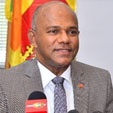
Gen. R. M. Daya Ratnayake, WWV, RWP, RSP, USP, NDU, PSC (Retd.)
Gen. R. M. Daya Ratnayake (Retd.) is currently the Chairman of the Sri Lanka Ports Authority (SLPA) and was formerly the Commander of the Sri Lanka Army (2013-2015). He was enlisted to the Regular Force of the Sri Lanka Army in 1980. General Daya Ratnayake has held many command appointments and his role as the Commissioner-General of Rehabilitation to rehabilitate 14,500 more LTTE ex-combatants has been widely acknowledged. His exceptionally unique qualities in many daunting military operations have been well-recognized as a battlefield veteran and he has been decorated with more than twenty-six gallantry and service medals. Currently, he is pursuing PhD at the General Sir John Kotelawala Defence University, Colombo.
Topic: A Study on War, Warfare and Warfighting: The Sri Lankan Experience
Abstract: Sri Lanka's experience in the final successful military operation over the Liberation Tigers of Tamil Eelam (LTTE), offers new insight into warfare and war- fighting. The country's military offensive ran contrary to an internationally-led peace effort which was seen as the only hope for ending the three decade-long armed conflict. However, the State's strategy was to defeat LTTE militarily first and find a solution to the larger conflict while addressing root causes to the conflict, later.
In the midst of several alleged human rights violation charges levelled against the Government of Sri Lanka and the military, the world has missed the opportunity to analyze the island nation's armed conflict, warfighting and warfare with known and invented military concepts and methods. This paper is such an attempt, and in that, the author redefines Sri Lanka's armed conflict and explains the events of the successful military offensive, connecting age-old military concepts, methods and doctrines.
This paper argues that the Sri Lankan experience was an optimum application of military power with a clear political strategy to resolve an armed conflict with a state-of-the-art guerilla force. |
|

Dr. Erica Marat
Dr. Erica Marat is an Associate Professor and Chair at the Regional and Analytical Studies Department of the College of International Security Affairs, National Defense University, Washington, D.C. Her research focuses on violence and mobilization, security institutions, and mobilization in Eurasia, India and Mexico. She has authored three books, including most recently, The Politics of Police Reform: Society against the State in Post-Soviet Countries (Oxford University Press 2018).
Topic: Surveillance Technologies: Chinese and Russian Chronicle in Central Asia
Abstract: The recent spread of surveillance technologies in Central Asia shows how cities and countries aspire to follow global trends for innovation in the name of public safety and the rule of law. Authorities of all large cities have installed facial-recognition cameras and CCTV systems under the aegis of ‘smart’. But they are also susceptible to the whims of technological giants who are working as part of their countries’ geopolitical ambitions. State-controlled Chinese companies HikVision and Huawei and the Russian company, Vega dominate the supply side. Given the pervasive absence of legislative oversight, the countries looking to leapfrog into the digital future are adopting a virtual authoritarianism that risks suppressing political dissent and further marginalizes already disadvantaged groups. Inevitably, with greater dependence on foreign vendors, the Central Asian countries are also becoming part of global competition between China, Russia and the West for data collection for Artificial Intelligence (AI) purposes. |
|

Prof. Feodor Voitolovsky
Prof. Feodor Voitolovsky is Director of the Primakov National Research Institute of World Economy and International Relations, Russian Academy of Sciences (IMEMO). His research interests include international security, US foreign and security policy, Russia-US relations, US-China relations, US policy in North-East Asia, Transatlantic relations, NATO, global political prognostics, global governance and international institutions. He also holds other positions such as Professor at the Department of Political Science, MGIMO University (of the Russian Ministry of Foreign Affairs), head of IMEMO’s teaching and research department at the Far East Federal University (Vladivostok), Editorial Board member of the journal World Economy and International Relations and Editorial Board member of the Global Development annual series at the IMEMO. Prof. Voitolovsky has published a monograph and co-authored and co-edited twenty collective monographs. He is also an author of more than 70 articles in journals devoted to international politics and chapters in books including “Global System on the Brink: Pathways Toward a New Normal” (2016), “Global Perestroika: Transformations of the World Order” (2015), “Misbalances of Pacific Asia” (2015) and others.
|
|

Dr. Hanbyeol Sohn
Dr. Hanbyeol Sohn is currently an Assistant Professor in the Department of Military Strategy at the Korea National Defense University (KNDU). He graduated from Seoul National University and received a doctorate in military studies from KNDU. From 2002, Professor Sohn held both commander and staff positions in the field and served as an acting officer in the Strategic Planning Division, ROK Joint Chiefs of Staff. He also conducted research for the Stockholm International Peace Research Institute (SIPRI) and Korea Research Institute for National Security (KRINS). His research areas include the ROK-US Alliance, non-proliferation policy and nuclear strategy, and Northeast Asian security.
Topic: Defence Innovation and South Korea’s Evolving Military Outlook in Asia
Abstract: In a rapidly changing security environment on the Korean Peninsula, South Korea is pursuing "Defense Reform 2.0.” Its objective is to build an innovative, creative, 'elite and advanced strong force,' and it suggests four innovations – military structure, defence management, military culture, and defence industry. Many people preparing for future wars emphasize the "Future of War," in terms of, the emerging military technology changes the face of war. But they must also grapple with the question of "War of the Future", which is a continuation of politics by other means. Since the “state-war-technology” triangle has an interdependent nature, the Military-Technical Revolution (MTR), Revolution in Military Affairs (RMA), and Revolution in Security Affairs (RSA) have a synergic interaction. Therefore, South Korea's Defense Reform 2.0 will determine its success depending on whether military technology, military strategy and defence innovation can develop together. |
|

Dr. Ikboljon Qoraboyev
Dr. Ikboljon Qoraboyev is an Associate Professor of International Relations at the Higher School of Economics of M. Narikbayev KAZGUU in Nur-sultan, Kazakhstan. Dr Qoraboyev received his PhD in International Law from the University of Toulouse. His research spans across International Law, International Relations and Comparative Regionalism Studies. His research interests include regionalism in Eurasia, Belt and Road Initiative from the perspective of comparative regionalism, great power interactions in Central Asia, international law in domestic legal systems, and understanding of sovereignty in Central Asia.
Topic: Rise of China and global security dynamics: Implications for Central Asia
Abstract: This paper will elaborate on implications of the rise of China for the Central Asian region. China's rise as great power is one of the biggest tests and opportunities for global governance. At the same time, it poses one of the most important challenges to international security. For Central Asians, it is important to acquire a comprehensive understanding of China's rise from the perspective of global security dynamics. This paper will begin by providing a summary of the decades-long IR debate on China's rise as a great power. It will then proceed with analyzing the major contemporary challenges to international order and global security posed by the China factor. It will conclude by highlighting how the consequences of these major international shifts may unfold in Central Asia. |
|

Mr. Jean-Christophe Noël
Mr. Jean-Christophe Noël is Associated Research Fellow at IFRI's Security Studies Center in Paris. He is a former French Air Force officer. After pursuing a career as a fighter pilot, he held various staff positions, dealing with doctrinal or prospective matters. He was also the Deputy Chief of Staff of the French Air Force, Chief of Staff from 2006 to 2009, a Military Fellow at the Center for Strategic and International Studies in 2009-2010 in Washington DC, and had been in charge of politico-military affairs at the Policy Planning Staff of the Ministry of Foreign Affairs from 2012 to 2017. He currently teaches at Sciences Po Paris. He graduated from the French Air Force Academy, Sciences Po Paris and the French Ecole de Guerre.
Topic: Will AI revolutionize Warfare?
Abstract: Although the development of Artificial Intelligence (AI) is still in its early stages, it has already had an impact on the armed forces. In time, AI will be able to take into account more wide-ranging and diverse data in order to develop a tactical situation. Besides, the execution speed of the algorithms that can process and immediately enhance the data received, will dictate the execution rate of certain tasks.
The progress of AI could lead to a true military revolution, where a new form of automation could gain ground. The soldier of the future could for example, be the shepherd of a flock of specialized robots. A change in the relationship between humans and war could also happen. By abandoning a part of their security to algorithms, the citizens of the future could banish war from their horizon and give a very wide-ranging and dangerous autonomy to the institutions responsible for defence. The most pessimistic forecasters envisage apocalyptic scenarios, but the worst is by no means inevitable. |
|

Dr. Jeffrey Becker
Dr. Jeffrey Becker directs the Indo-Pacific Security Affairs Program at CNA. His research focuses on Chinese politics and Chinese foreign policy and security issues, including China's military diplomacy, US-China military engagement, and the security implications of China's expanding global presence in the Middle East and the Indian Ocean. Dr. Becker’s recent CNA publications include China’s Presence in the Middle East and Western Indian Ocean: Beyond Belt and Road and China’s Military Support Facility in Djibouti: The Economic and Security Dimensions of China’s First Overseas Base. His peer-reviewed writings have appeared in the Naval War College Review, the Journal of Chinese Political Science, and Comparative Political Studies. He has also published articles in East Asia Forum, The National Interest and The Diplomat. From 2014-2018, Dr. Becker supported the US Navy with China's participation in the multilateral “Rim of the Pacific” exercise. As part of these efforts, he has worked alongside US and Chinese exercise planners, and has spent time at sea aboard multiple Chinese navy warships.
Topic: Revision and Continuity in America’s Approach to the Indo-Pacific
Abstract: The US Department of Defense Indo-Pacific Strategy Report describes the Indo-Pacific as the Department’s “priority theatre” and “the single most consequential region for America’s future.”
This renewed focus on the Indo-Pacific comes at a time when the United States and others, including regional powers such as India, seek to manage a range of different and complex security challenges that threaten to undermine continued stability and economic growth in the region. From the perspective of the United States, inter-state rivalry – most notably growing competition with China – remains a primary concern. Additionally, however, non-traditional threats, including terrorism and the rise of extremist ideology, demand attention from both the United States and US partners and allies.
This paper seeks to provide an insight into the current US approach to the region. In doing so, it seeks to examine how the US conception of the Indo-Pacific region has changed over time, how US security policy towards the region has evolved, what forces are driving that evolution, and what that means for the United States, US partners and allies, and the region more broadly. |
|

Ms. Kwek Ai Wei
Ms. Kwek Ai Wei is the Special Functions Officer to the Deputy Minister of Defence of Malaysia. In this role, she advises the Deputy Minister on policy matters, and was involved in the drafting of the first Malaysian Defence White Paper. Prior to this, she has worked in various policy advisory and governmental affairs roles for international organizations, including the United Nations Development Programme and the International Committee of the Red Cross, and in the diplomatic corps. She holds a Masters in International Studies and Diplomacy from SOAS, University of London, and was an alumni of the Young Southeast Asian Leaders' Initiative (YSEALI) Professional Fellow Program instituted by the US Department of State.
Topic: Defence Planning and Maritime Disputes in Southeast Asia
Abstract: Several Southeast Asian nations have published their Defence White Papers in recent years. Malaysia published its inaugural Defence White Paper in 2019. Vietnam published its fourth Defence White Paper in 2019 while Brunei, Philippines and Indonesia published theirs in 2011, 2012 and 2015 respectively.
These White Papers were drafted amidst intensifying US-China strategic competition, geopolitical uncertainties and the increasing challenge of non-traditional security threats in the region. As maritime nations, these states share similar interests and security challenges in the maritime domain, including territorial maritime disputes with other littoral states, while also facing a varying degree of inland security threats. As small states, a looming Chinese influence, coupled with US-China competition at the global level, has caused anxiety that the region, particularly the South China Sea, which might become a theatre of conflict between the great powers.
This paper will discuss the common themes expounded in these Defence White Papers and how the Southeast Asian states perceive their security environment. It will also explore the use of Defence White Paper as planning tools to spur defence reforms and force restructuring, taking into consideration the difference in domestic and political dynamics of each states. Further, the paper aims to demonstrate the responses devised by these states in securing their defence interests, both as individual states but also collectively as ASEAN member states. |
|

Dr. Lai Thai Binh
Dr. Lai Thai Binh is Deputy Director-General, Institute for East Sea Studies, Diplomatic Academy of Vietnam since December 2019. He has served as a Vietnam-U.S. Relations Desk Officer (2003), Deputy Director (2006), Director of the North America Division (2007), Director of American Research Division (2009), Assistant Director-General (2009- 2012) and Deputy Director-General (2013-2016) in the Americas Department, Ministry of Foreign Affairs of Vietnam and was posted as the Deputy Consul-General of Vietnam in Houston, Texas (2016-2019). Dr. Binh earned his first Bachelors degree in International Economics from the Hanoi Foreign Trade University, a second Bachelors degree in Law from the Hanoi National University, a Post-Graduate Diploma in International Management from International Management Institute in New Delhi (India), a Master of International Public Policy degree from SAIS, Johns Hopkins (Washington DC) and a PhD in International Relations from the Diplomatic Academy of Vietnam.
Topic: Maritime Planning in Vietnam's National Security Calculus
Abstract: The sea plays an extremely important role in the development and security of Vietnam. In the context that the regional and international situation continues to unpredictably fluctuate, Vietnam pays more attention to maritime planning and focuses on major principles that will guide the maritime development for the next 10-20 years. Vietnam's maritime planning is focused on the following factors: (i) Ensuring maritime economic security in the direction of rapidly developing tourism and marine services, maritime economy, oil and gas exploitation and maritime mineral resources, marine and industrial aquaculture and exploitation, coastal industries, renewable energy and new maritime industries; (ii) Developing residential communities in association with regional development and ensure safety and security for fishermen; (iii) Strengthening the capacity of the armed and law enforcement forces to be ready to deal with traditional and non-traditional maritime security threats; persistently building an environment of peace, stability and legal order at sea; strengthening and expanding foreign relations and contributing to the joint efforts of the international community towards the conservation and sustainable use of seas and oceans. |
|

Dr. Laxman Kumar Behera
Dr. Laxman Kumar Behera is Research Fellow at the Manohar Parrikar Institute for Defence Studies and Analyses. As a member of the Institute’s Defence Economics and Industry Centre, Dr. Behera specialises on issues related to Arms Procurement, Defence Offsets, Defence Industry, Military Spending, and Defence Cooperation. He was closely associated with two high-level Committees set up by the Ministry of Defence on Defence Acquisition and Defence Expenditure. He was a Consultant to the Task Force on Self-Reliance and Defence Modernization constituted by the National Security Council Secretariat (NSCS), Government of India. Dr. Behera was the Chief Coordinator and Member of two study teams constituted by the Ministry of Defence to examine the Impact of Offsets on the Indian Defence Industrial Base, and Defence Acquisition: International Best Practices. As part of his responsibilities Dr Behera undertakes policy relevant research besides providing regular inputs to the Ministry of Defence and other ministries and departments of the Government of India.
Topic: ‘Make in India’ and the Changing Profile of Indian Defence Industry
Abstract: The ‘Make in India’ programme, launched by Prime Minister Narendra Modi in September 2014, has been a guiding force for the Ministry of Defence to usher in many defence industrial reforms. Within a short span of five-and-a-half years, numerous reform measures have been implemented that were hitherto unheard of. These measures include simplification of industrial licensing, increase in FDI cap, articulation of defence export promotion measures, opening of trial and testing facilities for use by the private sector, a level-playing field for the domestic private companies, articulation of an indigenization policy to be followed by the state-owned production entities and reform of the state-owned production entities. The government has also simplified its procurement procedures to provide greater opportunity to domestic industry to participate in mega contracts including that of fighters, submarines, helicopters and tanks. While all these measures have been taken to strengthen India’s defence production as a whole, an inherent undercurrent of the policy reform has been greater participation of the Indian private sector, which is perceived to be the future of India’s arms production. The paper examines the impact of all the policy reform measures on domestic defence production with special focus on the Indian private sector, to assess its contribution to India’s self-reliance efforts. |
|

Dr. Malcolm Davis
Dr. Malcolm Davis joined the Australian Strategic Policy Institute (ASPI) as a Senior Analyst in Defence Strategy and Capability, in January 2016. Prior to this he was a Post-Doctoral Research Fellow in China-Western Relations at Bond University Queensland, from March 2012 to January 2016, and he currently retains an Honorary Assistant Professor's position in the faculty there. He has worked with the Department of Defense, both in Navy Headquarters in the Strategy and Force Structure area, and with the Strategic Policy Division in the Strategic Policy Guidance sections from November 2007 to March 2012. Prior to this appointment he was a Lecturer in Defence Studies with Kings College London at the Joint Services Command and Staff College in Shrivenham, UK, from June 2000 to October 2007. He holds a PhD in Strategic Studies from the University of Hull as well as two Masters degrees in Strategic Studies, including one from the Australian National University's Strategic and Defence Studies Centre.
Topic: Artificial Intelligence, National Security and Modern Warfare: An Australian Perspective
Abstract: The development of Australia's future defence capability faces a looming inflection point in military affairs. The balance of advantage in future warfare may be determined by which side can more quickly identify and exploit disruptive innovation, both in terms of capability development prior to war, as well as in actual military operations during wartime.
An emphasis on slow, large, and expensive acquisition projects based around traditional platforms – warships, submarines, armoured fighting vehicles and manned combat aircraft – may prove inadequate in a future where Artificial Intelligence (AI), unmanned autonomous systems, and other new types of military capability are shaping future military innovation cycles.
This paper examines how the Australian defence and national security community is dealing with this emerging challenge. It explores the potential application of AI and battlespace robotics, hypersonics and space capability for the Australian Defence Force (ADF) in the 2020s and beyond. It considers how their introduction might transform our approach to military operations in a multi-domain operational environment. It also considers how these technologies, and more broadly, the fourth Industrial Revolution (4IR) in defence acquisition, can ensure Australia can maintain competitive advantage against the rapid pace and scope of military technological change. |
|
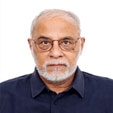
Dr. Manoj Joshi
Dr. Manoj Joshi is a Distinguished Fellow at the Observer Research Foundation, New Delhi. A professional journalist, he is currently a columnist for several Indian newspapers and a commentator on TV. He has had a long-term interest in national security matters. In recent years, he has focused on the rise of China and his most recent academic publications have been on China's technology challenge, its military modernization, the South China Sea dispute, the Doklam Crisis and the Belt and Road Initiative and the Wuhan Summit. In 2011, he was a member of the Task Force on National Security chaired by Mr Naresh Chandra to propose reforms in the national security system. He was also involved in the drafting of a Strategic Defence Review as a member of India's National Security Council's Advisory Board. He has co-edited a book on the US and South Asia and authored two books on Kashmir. He holds a PhD from the School of International Studies (SIS), Jawaharlal Nehru University, New Delhi.
Topic: Strategic Uncertainty in India's Neighbourhood
Abstract: There is a great deal of flux across the world. Old paradigms are shifting, without new ones in sight. The country that shaped the world order in the wake of World War II, the US, now decries the order and is set on demolishing it. As a result, the international institutions it shaped — the UN, the World Trade Organization, or the Climate Change Conferences — are being buffeted by contrary winds.
The US has decided that it is in strategic competition with China and is seeking to upend the global trading order which it says has unfairly exploited them. Technology has emerged as the centre point of this contest. Military and economic competition did characterize the old order, but in the past decade we have seen facets of this change in terms of climate change, piracy, the use of non-state actors to push state policy, cyber threats, energy and food security and anti-immigrant sentiments. At the beginning of this year, the outbreak of coronavirus has brought to the fore the enormous challenge of pandemics. Countries must therefore gear up to newer challenges and adjust their defence strategies to cope with them.
What is the scenario in India's neighbourhood? First and foremost is the rise of China and its growing footprint in the South Asian and Indian Ocean Region (SA-IOR). In terms of resources, both financial and military, India has to compete with Beijing. China's ties with Pakistan have been solidified and its footprint in Nepal and Myanmar is growing. The victory of the Rajapakses in Sri Lanka means that at a minimum, Beijing faces a positive environment. In the Maldives, pro-India forces have prevailed, but for how long is the question. The short issue here is that India lacks a relationship that has institutional depth that can overcome periodic changes in the leaderships of the countries; it is dependent on who wins an election in these countries.
No matter how one looks at it, the issues of SA-IOR cannot be limited to the region. They are intrinsically connected with the near abroad — Iran, Central Asia, ASEAN and so on. India's strategic outlook has to factor this in and come up with a strategy that will help India shape policies in its neighbourhood and deal with the larger challenges. |
|
 Dr. Manpreet Sethi Dr. Manpreet Sethi
Dr. Manpreet Sethi, Distinguished Fellow at the Centre for Air Power Studies, New Delhi, leads the project on nuclear security. She is an expert on the entire range of nuclear issues with over 90 papers in academic journals of repute to her credit. Her book, Nuclear Strategy: India's March towards Credible Deterrence (2009) is deemed essential reading at many war colleges. Besides, she has also authored, co-authored and edited eight other books. A member of Prime Minister's Informal Group on Disarmament in 2012, and of the Executive Board of the Indian Pugwash Society, she has also been part of several Track-II initiatives. She is currently on the Board of the Asia-Pacific Leadership Network and a Consultant with the global Nuclear Abolition Forum. In recognition of her consistent work, she was awarded the prestigious K. Subrahmanyam Award, an honour conferred by the Manohar Parrikar IDSA on a scholar for excellence in strategic and security studies.
Topic: National Security and India's Evolving Nuclear Posture
Abstract: This year India completes 22 years as a state with nuclear weapons. Over this period, it has travelled a long distance in terms of its capability and its position in the global nuclear order. Meanwhile, the global nuclear landscape has also changed dramatically. Inter-state relations between all nuclear armed states are going through a period of mistrust; new technologies are emerging that will intersect with nuclear deterrence in new and not-yet- understood ways; existing arms control architecture is giving way under the weight of new threat perceptions; and nuclear war-fighting philosophies that had been put to rest in the 1980s are beginning to make a comeback. These global developments will also have a regional fallout in Southern Asia and impact India's security.
Nuclear weapons are an important component of India's national security for the deterrence benefit they offer against the possibility of nuclear coercion, blackmail or use by its two adversaries in the neighbourhood. While India would ideally prefer a nuclear weapons-free world, it is compelled to move towards credible deterrence for safeguarding its security. In this march towards credible deterrence, India has delineated a clear nuclear doctrine for itself and has been developing capability as deemed necessary to establish credibility of deterrence. With this backdrop in view, the paper will examine India's evolving nuclear posture in terms of the doctrinal guidelines, capability advancements and diplomatic positions. |
|
 Ms. Megan Geckle Ms. Megan Geckle
Ms. Megan Geckle is Assistant Director of the Council on Foreign Relations' Center for Preventive Action (CPA), which aims to prevent, defuse, or resolve deadly conflicts around the world by expanding the body of knowledge on conflict prevention. Her expertise includes hybrid warfare, gray zone competition, the role of intelligence in early warning and early action, and Middle East and South Asia terrorist groups. Prior to joining the Council on Foreign Relations, Ms. Geckle was Executive Coordinator at the Woodrow Wilson International Center for Scholars where she coordinated the Center's strategic planning efforts. She has a Masters in Security Studies from Georgetown University's Edmund A. Walsh School of Foreign Service.
Topic: Managing Territorial Disputes in an Era of Hybrid Warfare
Abstract: In an era of renewed major power competition, nation-states are using gray zone and hybrid warfare tactics to achieve strategic objectives and avoid war. By exploiting asymmetries in commitment and capitalizing on competing interpretations of sovereignty, nation-states have used these tactics to establish de facto control of contested territory. Historically, however, disputes over territory have increased the probability of escalation to inter-state war by a significant margin. Gray zone and hybrid warfare tactics are designed to be less provocative, but their ambiguity paradoxically raises the risk of escalation in crisis scenarios. Coupled with technological advances that increase the speed and tempo of operations, the likelihood of inadvertent escalation is growing. This paper will explore the dynamics of territorial disputes in an era when climate change, urbanization, and migration erode boundaries and concepts of territoriality, and suggest that using hybrid warfare tactics to seize territory may lead to increasingly acute security dilemmas. As a result, nation-states should review and update existing conflict management mechanisms to de-escalate crises and prevent war.
|
|
 Ms. Melissa Conley Tyler Ms. Melissa Conley Tyler
Ms. Melissa Conley Tyler is Director of Asialink Diplomacy at The University of Melbourne. Melissa joined Asialink after 13 years as National Executive Director of the Australian Institute of International Affairs (AIIA). Under her leadership, the AIIA was recognised as the Top Think Tank in Southeast and the Pacific and a top 50 think tank worldwide in the University of Pennsylvania's Global Go To Think Tanks Index for three years running. Melissa is a lawyer and specialist in conflict resolution, including negotiation, mediation and peace education. She was Programme Manager of the International Conflict Resolution Centre at the University of Melbourne and Senior Fellow at Melbourne Law School. In 2017, she co-authored Think Tank Diplomacy (2017), the first-ever book-length discussion of the role of think tanks in modern diplomacy. In 2019 she was honoured as a Fellow of the AIIA in recognition of her distinguished contribution to international affairs.
Topic: Strategic Uncertainty in Australia's Regional Outlook
Abstract: For all of its modern history, Australia's security has been grounded in an alliance with a hegemonic power. While the United States remains Australia's close ally, including through the ANZUS mutual defence treaty and the Five Eyes network, a rising China and a more inward-facing US are a cause for considerable anxiety in Australia's strategic community.
The impact on Australia of China's re-emergence as a global power has been profound, with its economy now tied to Chinese demand for natural resources, education and tourism. Australia is faced with the challenge of striking the right balance in managing its relationship with China, having been placed in a delicate position between its most important economic partner and its longtime military ally.
As such, Australia is working to deepen its strategic and economic relationships with partners in the region such as India, Japan, South Korea and Indonesia to manage this mutual uncertainty. Australia is highly motivated to collaborate more closely with its regional partners in a world where US primacy and military protection cannot be taken for granted.
|
|

Ms. Nabanita Radhakrishnan
Ms. Nabanita Radhakrishnan, OS is Director General (DG), System Analysis and Modelling (SAM) at Defence Research and Development Organisation (DRDO). As DG (SAM), she oversees two laboratories: (a) Institute of Systems Studies and Analysis and (b) Centre of Fire Explosives and Environment Safety. She also oversees three Directorates at DRDO Headquarters: (a) Directorate of Systems and Technology Analysis; (b) Directorate of Public Interface; and (c) Directorate of Quality, Reliability & Safety. She took over as Director, Planning & Coordination (DP&C) in October 2013 at DRDO Headquarters where she coordinated the formulation of stringent guidelines for Project Formulation and Management for DRDO. She oversaw the execution and monitoring of over 350 projects encompassing various technology domains. She has presented a number of papers on the development of the Aircraft Gearbox and on DRDO products and systems at various forums. She is a recipient of the DRDO Scientist of the Year Award for 2008 and the Team Leader Award for Best Techno-Managerial Service for 2012. She is a Member of the Aeronautical Society of India and the Instrument Society of India.
Topic: Role of Indigenous technologies in Defence Planning (Co-authored with Dr. Sumit Goswami, DRDO)
Abstract: India’s impetus on defence manufacturing through the ‘Make in India’ initiative is driven by the need for self-reliance in design and production of defence equipment. It is today one of the leading arms importers and as such like all arms importers vulnerable to shortage of arms supplies in the event of an external aggression.
Focusing on defence technology development within the country will have a two-pronged benefit. On the one hand, it will address the problem of dependence on foreign OEMs and on the other, it will help in boosting the domestic defence manufacturing sector and establish self-reliance.
The need to invest heavily in Research and Development, and leverage the institutions of learning to further the cause of indigenization is well established. Technology transfer contracts are a good approach when buying arms and ammunitions; however, the real benefits of achieving self-reliance can never be achieved through this route alone. Ultimately, research and development is the only real hope for building indigenous weapons systems. India has managed to make its mark in the realm of Space as well as in certain domains of defence technology such as missiles, radars, and electronic warfare. If better efforts are made and adequate funding is provided, India would be able to achieve similar leaps in all other defence technologies as well.
Finally, arms exporting governments, as well as defence companies have a huge incentive in keeping other nations away from self-reliance, as it keeps the revenues flowing. It is for each country to weigh-in the benefits of indigenous technology development versus a complete reliance on another nation while it works out its defence strategy for ensuring national security. This paper will examine the role and need for indigenous technology development in an increasingly polarized world and will suggest initiatives to be taken both by developers and policy makers. |
|

Dr. Petr Topychkanov
Dr. Petr Topychkanov is a senior researcher in the SIPRI Nuclear Disarmament, Arms Control and Non-proliferation Programme. He works on issues related to nuclear non-proliferation, disarmament, arms control, and impact of new technologies on strategic stability. Before joining SIPRI in 2018, Dr. Topychkanov was senior researcher at the Centre for International Security at the Primakov National Research Institute of World Economy and International Relations of the Russian Academy of Sciences. From 2006 to 2017 he was Research Fellow at the Carnegie Moscow Center's Nonproliferation Program. He obtained his PhD in History from the Institute of Asian and African Studies, Moscow State University. in 2009. In 2019, he authored a chapter, "Autonomy in Russian nuclear forces," in Vincent Boulanin (Ed.), The Impact of Artificial Intelligence on Strategic Stability and Nuclear Risk, Volume I: Euro-Atlantic Perspectives (SIPRI, May 2019), and co-authored a chapter (with Shannon N. Kile and Ian Davis), "US-Russian nuclear arms control and disarmament," in the SIPRI Yearbook 2019.
Topic: Russia's Defence Industries and New-Age Technologies
Abstract: The Russian military is an area of scientific advances and early adoption of cutting-edge technologies. Russia has a long record of using software solutions to automate functions of military systems including systems directly connected to its strategic weapons.
Artificial intelligence (AI), machine learning (ML) and autonomy are essential areas for Russia’s military development. The Russian leadership pays growing attention to incorporating new technologies into military research and development, and procurement programmes. At the meeting on Armed Forces development in 2018, President Vladimir Putin said: "Today we are witnessing a focus on the introduction of artificial intelligence and robotics in the military sphere and elsewhere. Our specialists should give priority attention to these areas."
About the same time, the Russian military followed up the President’s stance with their own decisions on AI, including the creation of the research hub "Technopolis," aimed at developing and implementing hardware and software platforms.
AI, ML, autonomy and other related technologies are used or planned to be used to enhance command, control, and communications, early warning, air, missile and space defences, offensive capabilities and military logistics and support.
For the first time, AI was mentioned as a part of the Russian Armed Forces command and control in 2011. Then, the Chief of General Staff, General Nikolay Makarov announced that by 2015, the new National Defence Operations Centre would be established, and it would replace an old and inefficient vertical command and control. The Centre was launched in December 2014 and became the central information hub between governmental agencies. AI-enabled solutions are involved in collecting and organizing information flows.
For the Strategic Rocket Forces responsible for the nuclear arsenal of Russia, the areas of specific and stated interest in AI are decision-support systems, intelligent systems and weapons (including onboard control systems), and automation.
Autonomous order transmission and execution within the highly automated “Perimetr” (Perimeter) command-and-control system of mass nuclear retaliation remain possibilities, although theoretical. At present, humans are in the decision-making loop at all times. A fully automated launch process is indeed feasible, and its elements may be in place already. This system, which is operational from 1985, has reportedly been modernized several times and is reported to rely on AI.
Generally speaking, it is hard to assess the level of sophistication and maturity of the Russian military’s AI, ML and autonomy technologies, based on open sources. What is relatively certain is that these technologies in Russian systems are expending their footprint. |
|

Mr. Richard A. Bitzinger
Mr. Richard A. Bitzinger is Visiting Senior Fellow with the Military Transformations Programme at the S. Rajaratnam School of International Studies (RSIS), Singapore, where his work focuses on security and defence issues relating to the Asia-Pacific region. He was a Senior Fellow at RSIS from 2006 to 2018, and he headed the Military Transformations Programme from 2012 to 2018. Mr. Bitzinger had previously worked at the RAND Corporation, the Center for Strategic and Budgetary Affairs, the Asia-Pacific Center for Security Studies, and the US Central Intelligence Agency. Mr. Bitzinger has written several monographs and book chapters, and his articles have appeared in such journals as International Security, Orbis, China Quarterly, and Survival. He is the author of Arming Asia: Technonationalism and Its Impact on Local Defense Industries (Routledge, 2017), and Towards a Brave New Arms Industry? (Oxford University Press, 2003). He is the editor of The Modern Defense Industry: Political, Economic and Technological Issues (Praeger, 2009) and Emerging Critical Technologies and Security in the Asia Pacific (Palgrave, 2015).
Topic:The 4th Industrial Revolution, National Security, and Modern Warfare
Abstract: Technology is widely regarded to be a crucial element of military effectiveness and advantage. In theory (and often in practice), the possession of cutting-edge militarily relevant technologies equals more effective weapons systems, which in turn results in greater military power, which in turn translates into greater geopolitical power. At the same time, the transnational diffusion of military-related technologies is an important factor affecting the distribution of power in international politics. Consequently, the global dissemination of advanced, militarily relevant technologies – and in particular, what technologies are mostly to spread and how they will do so – should be as great a security concern as the spread of weapons systems themselves.
In this regard, the so-called Fourth Industrial Revolution (4IR) promises to create a new set of challenges when it comes to identifying what are new and significant military technologies, how these capabilities will create military advantage and therefore political leverage, in the decades to come.
To be sure, the barriers to the widespread diffusion, development, and exploitation of many 4IR technologies remain high, especially for less advanced militaries. Nevertheless, less-technologically advanced militaries are not necessarily doomed to permanent inferiority, and there exist many less-than-cutting-edge technologies that have the potential to cause outsized disruption to the regional balance of power. Consequently, even lesser militaries might discover “offsetting” alternatives that may permit them to asymmetrically compete with larger, more technologically diversified rivals.
|
|

Mr. Richard Ghiasy
Mr. Richard Ghiasy is a Lecturer at Leiden University, a Senior Fellow at the Leiden Asia Centre, and an Associate Researcher at the Stockholm International Peace Research Institute (SIPRI). His expertise is on Asian geopolitics and geo-economics, EU-Asia relations, China's foreign and security policy, and conflict prevention. Mr. Ghiasy has provided policy advice to inter alia the EEAS, European Commission, Ministries, the OSCE, and OECD. In 2013 Richard spoke at TEDx. He has also testified at the European Parliament and made presentations at the world's top 20 universities. He has conducted professional travel in over 70 countries during a 15-year career— and has been based in seven countries across Eurasia. He is a member of the Belt and Road Research Platform, and the Stockholm Observatory for Global China at the Swedish Institute of International Affairs (UI).
Topic: ‘An identification and evaluation of potential risks to Asian security’
Abstract: This paper examines the five most significant risks to Asian security: 1). strategic distrust, 2). limited multilateral security structures and institutionalized dialogue on security, 3). Sino-US geopolitical competition, 4). the inability of governments throughout Asia to raise the local standard of living swiftly enough, and 5). environmental degradation.
However, there are two caveats. The first caveat is that there is no single Asia as a supranational entity or as an identity. Asia is the world’s most diverse continent across virtually any indicator. Furthermore, the five identified risks do not apply equally to the six regions that together form Asia, Northeast Asia, East Asia, Southeast Asia, South Asia, Central Asia, and Southwest Asia, and two vast bodies of water, the Western Pacific and the Indian Ocean. The second caveat is that when spoken of security, whose security is referred to? This paper will explore potential security risks to the national – and where possible – pan-Asian level and emphasize non-traditional risks. |
|

Dr. Richard Weitz
Dr. Richard Weitz is Senior Fellow and Director of the Center for Political-Military Analysis, at the Hudson Institute, Washington DC. His current research includes regional security developments in Europe, Eurasia, and East Asia as well as US foreign and defense policies. Before joining Hudson in 2005, he worked for shorter terms at the Institute for Foreign Policy Analysis, Center for Strategic and International Studies, Defense Science Board, Harvard University, and the US Department of Defense, where he received an Award for Excellence from the Office of the Secretary of Defense. Dr. Weitz has authored and edited several books and monographs, including Assessing the Collective Security Treaty Organization (2018); Promoting U.S.-Indian Defense Cooperation (2017) and Enhancing the Georgia-US Security Partnership (2016). Dr. Weitz has also published in journals such as The Washington Quarterly, The National Interest, NATO Review, Global Asia, and several others. His commentaries have appeared in several prominent newspapers and magazines. Dr. Weitz holds a PhD in Political Science from Harvard University and an M.Phil in Politics from Oxford University.
Topic: Russia-China-US Security Complexity and Its Impact on Asia's Balance of Power
Abstract: India has become an increasingly attractive partner for other great powers due to its large economy and population, expanding military power, and renewed determination to play a greater international role. Though the Sino-Russian strategic partnership continues, Moscow's relative importance to New Delhi is decreasing. During the Cold War, Russia was India's prime partner, but in recent years China has become the most significant economic actor for India. Meanwhile, the United States is becoming India's most important defence partner. Russian efforts to form a trilateral bloc between Beijing, Moscow, and New Delhi have repeatedly floundered due to persistent Sino-Indian tensions and diverging priorities. Russian leaders want to replace the existing Western-dominated world order with an entirely new one. The Chinese leadership seeks PRC primacy in Asia but not yet globally. Leading Indian policymakers do not aspire for sole global leadership but want their country to become a more globally significant, though still autonomous, actor in many domains. These divergences offer the United States opportunities to partner with India on security issues, provided Indian-US differences on economic and other questions, can be better managed.
|
|

Mr. S. Kalyanaraman
S. Kalyanaraman is a Research Fellow at the Institute for Defence Studies and Analyses. His areas of expertise are India's foreign and security policies as well as issues relating to international security. A PhD in International Studies from Jawaharlal Nehru University, New Delhi, Dr Kalyanaraman is a recipient of the Nehru Centenary British Fellowship and a former Visiting Fellow at the Department of War Studies, Kings College London. He is a visiting member of the faculty at apex civil and military training institutions including National Defence College, Army War College, Foreign Service Institute, and at Bhutan's Royal Institute for Governance and Strategic Studies. |
|
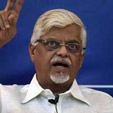
Dr. Sanjaya Baru
Dr. Sanjaya Baru is Distinguished Fellow, Manohar Parrikar Institute for Defence Studies and Analyses, and the United Service Institution of India (USI), New Delhi. He has been editor of India's major financial newspapers, The Economic Times, Financial Express and Business Standard. He was Media Adviser to Prime Minister Manmohan Singh and Director for Geo-economics and Strategy, International Institute of Strategic Studies, London. He was professor of economics at the University of Hyderabad, the Indian Council for Research on International Economic Relations (ICRIER) and the Lee Kuan Yew School of Public Policy, Singapore. He was Secretary-General, Federation of Indian Chambers of Commerce & Industry (FICCI). He was a member of India’s National Security Advisory Board during 1999-2001 and member of the Governing Board of the Centre for Policy Research, New Delhi. He is Founder-Trustee, Forum for National Security Studies, India. He was also member India-ASEAN Eminent Persons’ Group in 2010. His publications include The Strategic Consequences of India’s Economic Rise, India and the World: Essays on Geo-economics and Foreign Policy, The Accidental Prime Minister: The Making and Unmaking of Manmohan Singh, 1991: How P.V. Narasimha Rao Made History and The Bombay Plan: A Blueprint for Economic Resurgence.
Topic: India's National Security: A Geo-economics Perspective
Abstract: The recognition of the role of economic power and capability in the victory of the United States in the Cold War, and the role of economic under-performance in the implosion of the Soviet Union influenced the conceptualisation of Comprehensive National Power (CNP) by Chinese strategists. The CNP placed special emphasis on the contribution of economic capability to national power. Influenced by this thinking the Indian National Security Advisory Board (NSAB) also adopted the view that economic power is the cornerstone of a nation’s power in the contemporary world. That economic size of a nation matters and is an important element of national security. The rise of India as a major power was seen to be contingent upon the continued growth of the Indian economy. Various attempts to measure national power continued to give primacy to economic power and capability. Indian national security and defence capability require as their basis the revival of economic growth and accelerated industrial development. The success of the ‘Make in India’ programme is especially relevant to defence planning and capability in an ‘era of strategic uncertainty’. |
|

Dr. Stephen Nagy
Dr. Stephen Nagy is a Senior Associate Professor at the International Christian University in Tokyo, a Distinguished Fellow with Canada's Asia-Pacific Foundation, a Fellow at the Canadian Global Affairs Institute (CGAI), and a Visiting Fellow with the Japan Institute for International Affairs (JIIA). His recent funded research projects are “Sino-Japanese Relations in the Wake of the 2012 Territorial Disputes: Investigating changes in Japanese Business’ trade and investment strategy in China”. Currently, he is completing a research project entitled “Perceptions and drivers of Chinese view on Japanese and US Foreign Policy in the Region.” He has published widely in peer-reviewed international journals such as China Perspectives, East Asia, the Journal of Asian Politics and History and the International Studies Review on topics related to trade, nationalism, middle power diplomacy in the Indo-Pacific, international relations in an era of AI, and China-Japan relations.
Topic: Artificial Intelligence and Technological Innovation in Canada’s Indo-Pacific Outlook
Abstract: AI is reshaping the Indo-Pacific's economic, technological and security landscape. Canada's geographic distance from the region does not make it immune to the changes occurring in the region. Formulating an AI and technological innovation framework for engaging and remaining vested in the Indo-Pacific will be crucial for Canada to maximize its comparative advantages to meet its national interests. This paper investigates Canada's Indo-Pacific outlook through the lens of neo-middle power diplomacy by examining cooperation and collaboration with other middle powers in the region. This paper finds that there is a convergence in middle power views of the challenges and opportunities in the area of AI and technological innovation in the Indo-Pacific, requiring coordinated efforts to prevent a bifurcation of AI and technology into a closed versus an open system. Finding ways to halt, attenuate or bridge this bifurcation will become increasing salient as U.S.-China strategic competition deepens.
|
|

Prof. Sven Biscop
Prof. Sven Biscop is a Professor at Ghent University Belgium, lecturing on strategy and the foreign and defence policies of the European Union and its Member States. In addition, he is the Director of Europe in the World Programme at the Egmont – Royal Institute for International Relations in Brussels. In 2015, on the occasion of its tenth anniversary, he was made an Honorary Fellow of the EU's European Security and Defence College, where he lectures for diplomats and military officers from all Member States. He is also a regular speaker at the Belgian Royal Military Academy and at various staff colleges in Europe and America, as well as at the People's University of China in Beijing, where he is a Senior Research Associate. He is the author of European Strategy in the 21st Century (Routledge, 2019). In 2017 he was awarded the Order of Merit of the Republic of Austria.
Topic: NATO, the EU and the Future of European Defence Planning
Abstract: The NATO Defence Planning Process (NDPP) defines the level of ambition for the Alliance as a whole and translates it into national targets for each ally. For the European allies and partners of NATO, that two-level approach is no longer sufficient. On the one hand, in many capability areas (notably strategic enablers) the individual European States no longer have the scale to contribute at a level that would make a difference. On the other hand, the allies and partners of NATO that constitute the European Union (EU) are seeking a degree of strategic autonomy in that latter framework (notably for expeditionary operations), which requires a different mix of capabilities. The way forward could be to introduce a third level, Europe/the EU, into the NDPP, in between the NATO and national levels. First, the NDPP objectives would have to take into account the level of ambition for autonomous expeditionary operations set by the EU when designing the capability mix. Second, in specific capability areas, collective targets could be assigned to the allies and partners that are EU Member States, leaving it up to them how to achieve those through the use of EU mechanisms such as Permanent Structured Cooperation (PESCO).
|
|
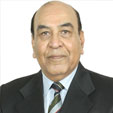
Lt. Gen. Syed Ata Hasnain (Retd.)
Lt. Gen. Syed Ata Hasnain (Retd.) has served in turbulent environments and hotspots through most of his 40-year illustrious career. From Sri Lanka to Siachen Glacier, from the North East to Jammu & Kashmir and in UN operations from Mozambique to Rwanda, he has been in crucial appointments. He served seven tenures in J&K, in every rank, was decorated in almost all of them, and knows the Jammu & Kashmir conflict comprehensively. He commanded the Indian Army’s Srinagar-based 15 Corps and is today one of the foremost writers and analysts on J&K, Pakistan and transnational extremist violence. He writes for major media houses, speaks internationally on a variety of strategic subjects and is a regular participant in television debates. On July 13, 2018, the President of India appointed Lt Gen Hasnain as Chancellor of the Central University of Kashmir. Gen Hasnain has six decorations awarded by the President for India and two by the Chief of Army Staff.
Topic: India's Neighbourhood Security Challenge to its Middle Power Status (or) Why India’s Middle Power Status Remains Challenged by its Neighbourhood?
Abstract: Post the Cold War, shorn of superpower rivalry, bolstered by multilateralism, no longer held back by non-alignment and backed by its emerging comprehensive national power, India justifiably found the label of ‘middle power’ applied to its international strategic status. However, India’s geostrategic location in proximity to the major sea lines of communication in the Indian Ocean, the Indo-centric nature of the Indian Subcontinent, its long Himalayan border with China with several disputed tracts, the continuous standoff with Pakistan over Jammu & Kashmir and the existence of economically weak and internally challenged states in the rest of the neighbourhood, all combine to hold back India from rising to its true potential. The demographic advantages of a sizeable young population fail to be realized due to challenges of resource allocation for the social sector that can produce the desired results. Besides these, there are the responsibilities of new unconventional threats such as climate change which regionally fall to the lot of India. Not only is the socio-economic domain a major challenge, equally so is the balancing of its military needs for achieving security of its land borders, maritime interests and internal cohesion. All these together impose a threat dividend far beyond what most nations face today. The paper will comprehensively examine India’s future threat pattern arising from its geostrategic location with reference to its neighbourhood in relation to the emerging trends in the international security environment and how it can create a balance between physical security and socio-economic progress in tandem with the neighbourhood, to achieve the true parameters of its potential.
|
|

Col. Vivek Chadha (Retd.)
Col. Vivek Chadha (Retd.) is a Research Fellow at the Manohar Parrikar Institute for Defence Studies and Analyses since 2011. Prior to that, he served in the Indian Army for 22 years. He is working on military jointness during his present fellowship period. He has authored a number of books including: Kargil: Past Perfect, Future Uncertain? dealing with specific aspects of the conflict and the future trajectory of warfare, especially in the Indian context, the evolving character of warfare and notion of victory. Prior to that, he wrote a book on military change titled Even if Ain't Broke Yet Do Fix It. The book documents the Indian Army's experiences with managing change both in conventional and sub-conventional scenarios.
Topic: The Changing Character of War: Relevance of Hybrid Warfare
Abstract: It is often said that the nature of war remains constant, even as its character undergoes change. The changing character of war is neither a unique phenomenon, nor is it the first time it is being debated. However, the circumstances and conditions under which the changes are taking place, have provided relevant actors the tools and influence that has seen few parallels in the past. Wars have always been hybrid. However, the significant and perceptible importance of tools like terrorism, subversion, cyberattacks and information domination in the hands of both state and non-state actors makes the ongoing shift unique in its characterization. This presentation will outline this trend and analyze its impact on contemporary warfare.
|
|

Capt. Yamamoto Katsuya, JMSDF
Capt. Yamamoto Katsuya has been a Chief Instructor at Joint Staff College, JMSDF, since November 2018. Capt. Yamamoto is a career surface warfare officer, serving on board various destroyers and commanding JS Shirayuki (DD 123). Ashore, he worked in a variety of staff appointments, including Chief of International Policy Planning Section of Joint Staff and Director of National Security & Strategic Studies Office of JMSDF Command & Staff College. As a military diplomat, he served as Defense/Naval Attaché to the People’s Republic of China and acted as the President of Naval Attaché Corp in Beijing. Capt. Yamamoto most recently served as the Liaison Officer and International Military Professor of the US Naval War College at Newport, Rhode Island. He collaborated with distinguished has published widely in Japanese and English. As a grassroot diplomat, he acts as the Advisor to the Japan-America Society of Rhode Island. He is a graduate of the Japan National Defense Academy and earned a Masters in Policy Studies from the National Graduate Institute for Policy Studies (GRIPS), Tokyo.
Topic: People's War at Sea: Challenge to the Humanitarianism
Abstract: In recent years, the activities of an "unmanned system" which replaces human activities have been dramatically increasing. Particularly, with the advance in the information technology, the fields of unmanned weapons are expanding in land battle warfare, in which “visualization of the battlefield,” is a means of taking one’s own soldiers out of four D-risks– Dull, Dirty, Dangerous, and Deep.
On the other hand, the international community has not yet realized that the situation is the exact opposite of avoiding the risk of human life in the ocean, far from land. This is using armed fishermen as a means of expressing the nation’s will at the frontline of national interests. A typical case is the Maritime Militia’s activities in the South China Sea. The People’s War/Civil-Military Fusion at Sea blurs the distinction not only between combatants and non-combatants, but also between peacetime and wartime contingency. These concepts explicitly challenge the humanitarianism which the international community longs for.
Today in the South China Sea is the future of the Pacific and Indian Oceans, and we are looking on with folded hands.
This view expressed does not reflect those of the Ministry of Defense and SDF.
|
|

Prof. Yoichiro Sato
Prof. Yoichiro Sato holds a Bachelors degree in Law from Keio University, a Masters in International Studies from the University of South Carolina, and a PhD in Political Science from the University of Hawaii. He is currently associated with the Ritsumeikan Asia-Pacific University. Previously, he taught at the US Department of Defense’s Asia-Pacific Center for Security Studies and Auckland University. He has published more than ten books, including The U.S.-Japan Security Alliance (co-edited with Takashi Inoguchi and G. John Ikenberry, Palgrave, 2011), Regional Institutions, Geopolitics and Economics in the Asia-Pacific (co-edited with Steve Rothman and Utpal Vyas, Routledge, 2017), and Re-Rising Japan (co-edited with Hidekazu Sakai, Peter Lang, 2017). His commentaries have appeared in global media, including Time, Newsweek, Al Jazeera, Agence Presse Francais, Nikkei Asian Review, Japan Times, Canberra Times, New Zealand Herald, Bangkok Post, Jakarta Post, Khmer Times, etc.
Topic: Re-Packaging Government Cooperation — National Security and Japan's Defense Planning
Abstract: Scholarly attention on Japan under the long reign of Prime Minister Abe Shinzo has exclusively focused on military-to-military cooperation mainly with the United States and with “Quad” partners. This bias gives an exaggerated image that the country is turning into an active militarist state, is moving towards a bilateral defence alliance with the United States and is aligning with the Quad partners to contain China. Under the previously interpretation of the constitution against the use of force and collective defence, Japan instead worked hard to forge multilateral civilian cooperation on non-military aspects of what it considers “comprehensive security.” This tradition is not lost, despite the growth of military cooperation with the US and other partners. Rather, incremental shifts in such multilateral efforts carefully align Japan’s broad national security interests with the US’ military strategy. The paper will summarily review the history of Japan’s Coast Guard cooperation in the Indo-Pacific and discuss it in the context of evolving US military strategy, Japan’s bilateral defence cooperation with the United States, and civil-military cooperation within the Japanese security forces.
|